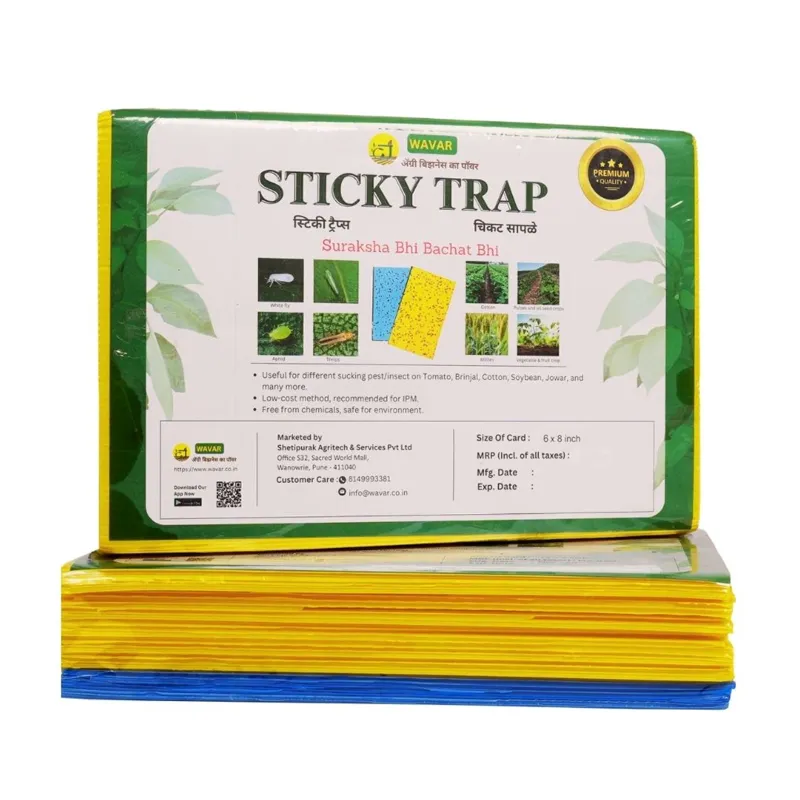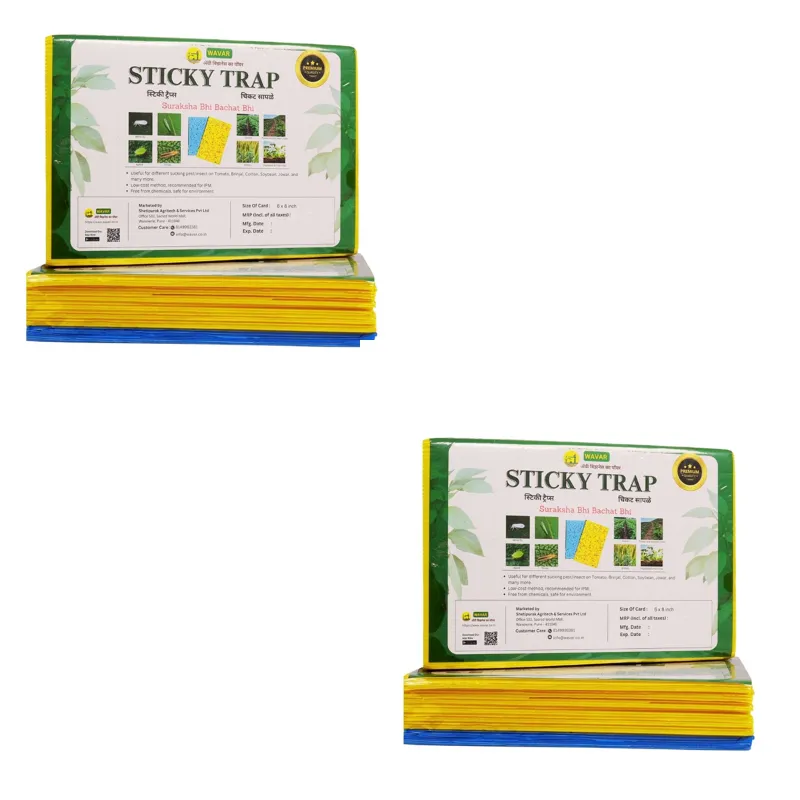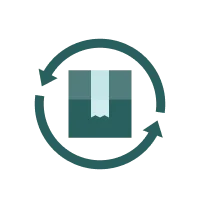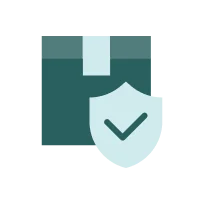The WAVAR A5 Size Yellow and Blue Sticky Traps provide an eco-friendly and efficient solution to control a wide range of sucking and flying insects that damage fruits, vegetables, and flower crops. Each pack contains 25 sheets – 20 yellow and 5 blue – designed to attract different insect pests like whiteflies, aphids, jassids, thrips, leaf miners, and cucumber beetles using their color preference. The traps measure 6 x 8 inches (about 15 x 20 cm) and are made from durable cardboard with a sticky adhesive coating that captures pests on contact. These traps are weather-resistant and reusable after replacing the sticky sheets, making them ideal for integrated pest management in organic and conventional farms. Recommended usage is 20-30 traps per acre for effective pest suppression. Our sticky traps offer an effective and eco-friendly solution for pest control. It includes 20 yellow and 5 blue traps to attract a variety of flying pests. Designed to withstand various weather conditions for long-term use. Combines the unique yellow and blue color spectra to maximize pest attraction and control.
Features
:- Attracts diverse pests like whiteflies, aphids, thrips, jassids
- Durable, weather-resistant cardboard with strong adhesive
- Eco-friendly, chemical-free pest control method
- Suitable for vegetables, fruits, and flower crops
- Durable and Weather-Resistant
- Long Lasting
- Excellent Effectiveness
- A5 Size
Applications
:- Monitoring and controlling whiteflies, aphids, thrips, jassids on crops
- Protects vegetables like cucumbers, tomatoes, and leafy greens
- Controls pests in fruit orchards and flower gardens
- Used in organic and conventional farming systems
- Integrated pest management in greenhouses and open fields
- Reduces pesticide use by trapping and monitoring pest populations
Usage
:Placement
- Hang them : A4 sticky traps are designed to be hung, either vertically or horizontally, depending on the specific pests you're targeting.
- Location : Place them at regular intervals (e.g., every 5-10 meters) or in areas where you've observed pest activity.
- Near Walls : Consider placing traps adjacent to walls to maximize pest capture and keep them out of your way.
- Orienting Traps : If you are using a trap that is covered with openings on either end, place the trap parallel to the wall so that both ends are accessible.
- For specific pests : If you are monitoring pests like fungus gnats and shore flies, orienting traps horizontally (facing the soil or upwards) is sometimes recommended.
Monitoring
- Regular Checks : Inspect the traps regularly (e.g., weekly) to check for trapped insects.
- Count Insects : Count the number of insects caught to assess the population size and track the effectiveness of the traps.
- Identify the Source : Use the trapped insects to help identify the source of the problem.
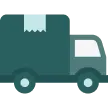 Delivery By: Sep 2 - Sep 4
Delivery By: Sep 2 - Sep 4 